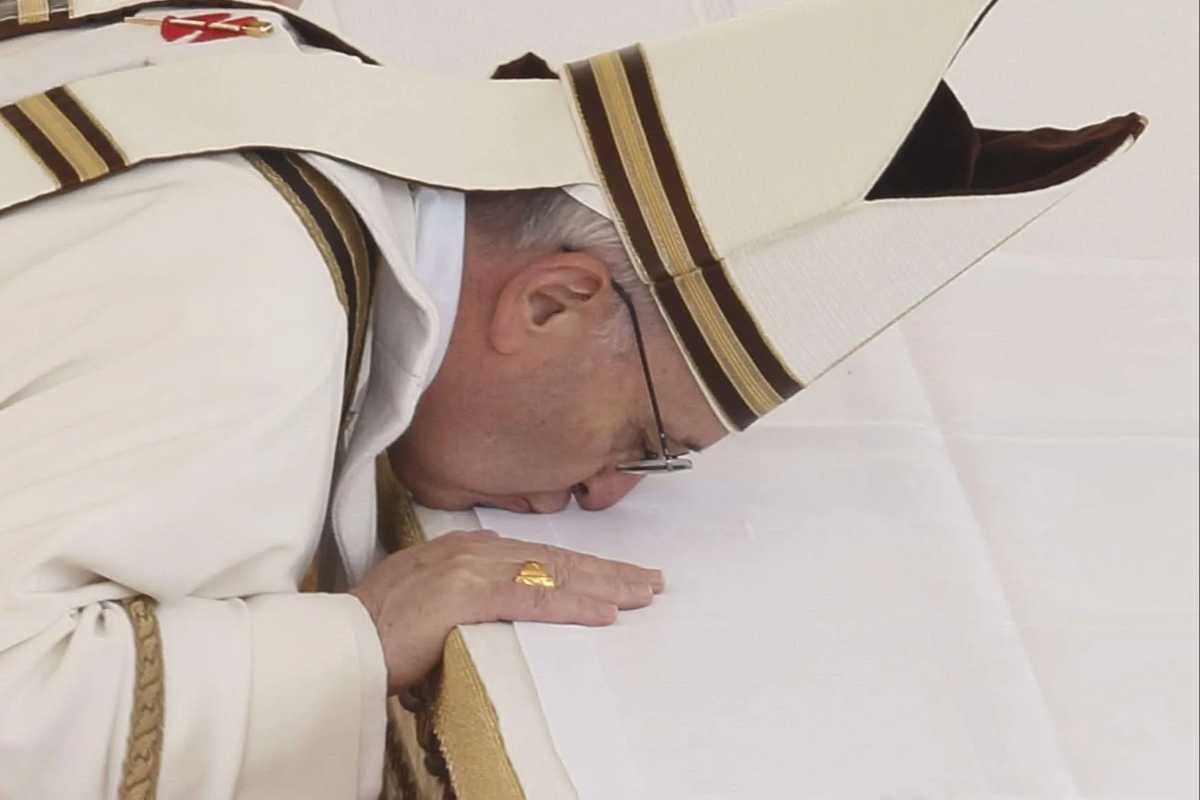Why Do Priests Kiss the Altar? – Plus More Facts You Need to Know
In the solemnity of a Catholic Mass, observers may witness a curious yet reverent gesture: the priest leaning down to kiss the altar. This action, steeped in tradition and symbolism, holds profound significance within the liturgical context. But what does it signify, and why is it performed? Let’s delve into this practice and explore some lesser-known facts about the altar in Catholic worship.
The act of the priest kissing the altar dates back centuries and carries deep spiritual symbolism. The altar, representing Christ himself, is revered as the focal point of the Mass, where the sacrifice of the Eucharist takes place. When the priest kisses the altar, it symbolizes reverence for Christ, whose presence is invoked during the celebration of the Mass. It also serves as a gesture of respect for the relics of saints that are often contained within the altar.
Furthermore, the kiss on the altar is a reminder of the priest’s dedication to his vocation and his commitment to the service of God. By bending down to kiss the altar, the priest acknowledges his role as a servant of Christ and the Church, offering himself in humble submission to God’s will.
Beyond the act of kissing the altar, there are other fascinating facts about this sacred fixture in Catholic worship. Here are some additional insights into the altar’s significance:
Material and Construction: Altars are typically made of stone or wood, symbolizing stability and durability. The choice of material reflects the enduring nature of the Catholic faith and the steadfastness of Christ’s presence in the Eucharist.
Orientation: Traditionally, altars are positioned so that the priest faces eastward during Mass, symbolizing the rising sun and the dawning of Christ’s resurrection. This orientation underscores the theme of Christ as the light of the world.
Consecration: Before its use in the celebration of Mass, the altar is consecrated by a bishop, who anoints it with sacred chrism and offers prayers of dedication. This ritual sets the altar apart as a sacred space, dedicated to the worship of God.
Altar Cloths: Altars are adorned with linens known as altar cloths, which serve as symbols of purity and reverence. These cloths are typically white, symbolizing the purity of Christ, and may be embellished with intricate embroidery or designs.
Tabernacle: In many churches, the altar is accompanied by a tabernacle, a secure receptacle where the Eucharist is reserved for adoration and distribution to the sick and homebound. The tabernacle serves as a focal point of reverence and devotion for Catholic worshippers.
Altar Servers: During Mass, altar servers assist the priest in various rituals and ceremonies, including the preparation of the altar and the presentation of gifts. This role underscores the collaborative nature of the liturgy and provides an opportunity for young Catholics to actively participate in the Mass.
In conclusion, the act of priests kissing the altar during Mass is a powerful symbol of reverence, humility, and dedication to the service of God. It underscores the sacredness of the altar as the focal point of Catholic worship and reminds us of Christ’s presence in the Eucharist. Additionally, the altar itself holds profound significance as a symbol of Christ’s sacrifice and the enduring faith of the Church. Through its construction, orientation, and rituals of consecration, the altar serves as a visible reminder of God’s presence among His people and the central role of the Eucharist in Catholic worship.

